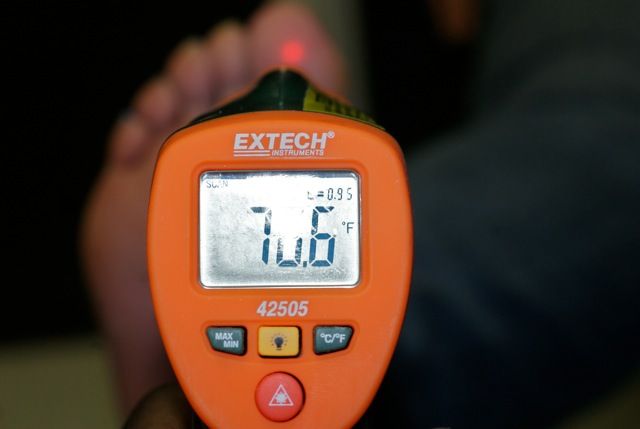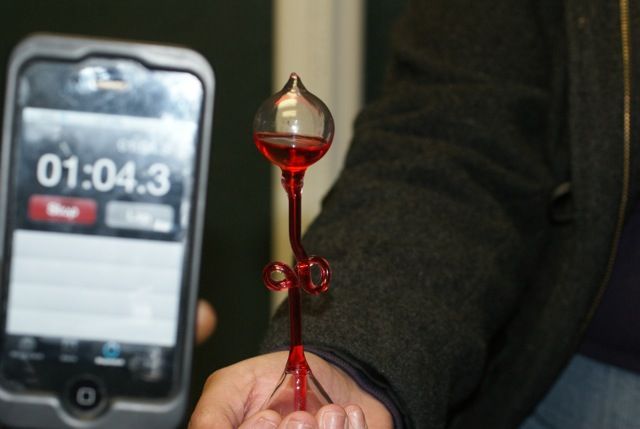Ever wonder why our normal body temperature is 98.6°? It turns out that it’s an ideal temperature for warding off fungi.
Fungal infections equal chronic disease states, and fungi thrive as body temperature drops. It’s a cornerstone principle of the “oximation” paradigm. I’ve been writing about in these pages. The idea is that chronic fungal infections drive repeated cycles of chronic, systemic inflammation and oxidative stress that ultimately lead to heart disease, cancer and other serious diseases.
Some really smart researchers at Albert Einstein College of Medicine, recently added strength to this idea, with their study showing that our 98.6° F (37°C) body temperature hits a perfect balance: warm enough to ward off fungi but not so hot that it becomes metabolically unrealistic to maintain.
A Perfect Balance
Arturo Casadevall, MD, PhD, professor and chair of microbiology & immunology at Einstein, and co-author Aviv Bergman, PhD, a computational biologist, developed a mathematical model to assess the benefits gained by increasing body temperatures to protect against fungi versus the metabolic costs in terms of extra caloric requirements needed to maintain those temperatures.
They found that the best temperature for squelching fungal pathogens while minimizing costs was 36.7°C, pretty darned close to our normal body temperature (37°C /98.6°F).
Previously, Dr. Casadevall showed that for every 1°C rise in body temperature, the number of fungal species that can infect an animal declines by 6%. This goes a long way in explaining why thousands of fungal species can infect and injure reptiles, amphibians, and other cold-blooded animals, but only a few hundred can cause problems for us mammals.
Still, the ones that do infect us can cause a lot of physiological havoc, and you may have noticed that chronic fungal infections seem to correlate with advanced age. That’s because thyroid hormone is a primary determinant of your body temperature, and thyroid levels start to decline around age 27.
Clinical Implications
As thyroid levels decline, fungi—especially yeast–start to rise. Fungal overgrowth often shows up first on skin, hair and nails. However, it can happen anywhere—in the blood vessels, liver, pancreas, stomach, colon, breast, prostate. When these organisms start to overgrow, they stimulate the immune system to promote inflammation and oxidation, the twin processes that lead to chronic disease.
I routinely measure temperatures in peoples’ toes to assess how well blood is circulating. As circulation is compromised and temperature decreases, fungus starts to grow. The sublingual temperature may be 98.6°, but it’s the hands and feet that tell the tale. The 98.6° temperature is required by cells all over the body to minimize fungal threats, so hands and feet should not be cold.
Lo-Tech, Hi-Value
You can get a really good picture of someone’s susceptibility to fungal infection (and  likelihood of being hypothyroid) with two inexpensive, low-tech tools. A simple laser thermometer, widely available at places like Home Depot and made by the same company that makes pediatric laser thermometers, can give accurate measurements at the extremities.
likelihood of being hypothyroid) with two inexpensive, low-tech tools. A simple laser thermometer, widely available at places like Home Depot and made by the same company that makes pediatric laser thermometers, can give accurate measurements at the extremities.
The patient pictured has a big toe temperature of 76.6°. That’s low—a clear sign of compromised circulation, and an ideal temperature for growing fungi. Readings in the upper 80’s, low 90’s are good for toes. Anything below that signals trouble.
 I’m also fond of a little tool I’ve come to call the “thyrometer.” It’s a little glass device filled with red liquid. Some of you might remember it as the “Sex Tester” novelty toy. The speed with which the liquid rises from the lower glass bulb, through the loops, and into the upper bulb reflects the temperature and circulation in a person’s hands. In a normal, healthy, euthyroid person, it should take between 3-5 seconds for the thyrometer to “boil.” For the patient pictured, it took well over a minute. That’s not good!
I’m also fond of a little tool I’ve come to call the “thyrometer.” It’s a little glass device filled with red liquid. Some of you might remember it as the “Sex Tester” novelty toy. The speed with which the liquid rises from the lower glass bulb, through the loops, and into the upper bulb reflects the temperature and circulation in a person’s hands. In a normal, healthy, euthyroid person, it should take between 3-5 seconds for the thyrometer to “boil.” For the patient pictured, it took well over a minute. That’s not good!
It may not be the most sophisticated clinical assessment tool, but patients will like it a heck of a lot more than a blood-draw, and it allows you to get a quick read on someone’s peripheral circulation, which declines as thyroid function drops.
Remember, thyroid levels determine body temperature, body temperature determines susceptibility to fungal overgrowth, and fungi are a prime driver of chronic disease states. You want your patients to have a solid 98.6° temperature, with nice warm hands and feet.







